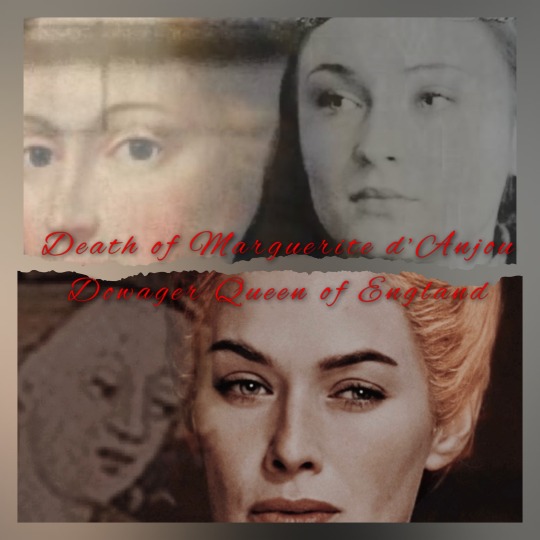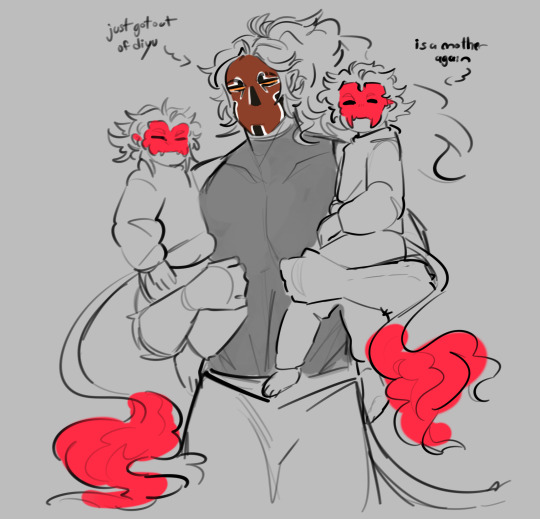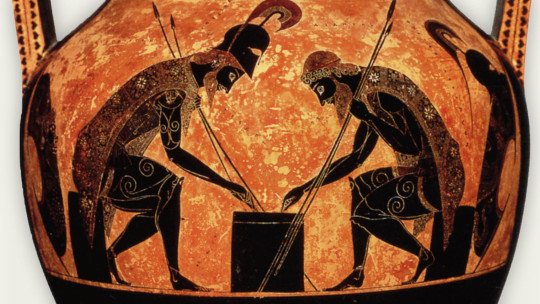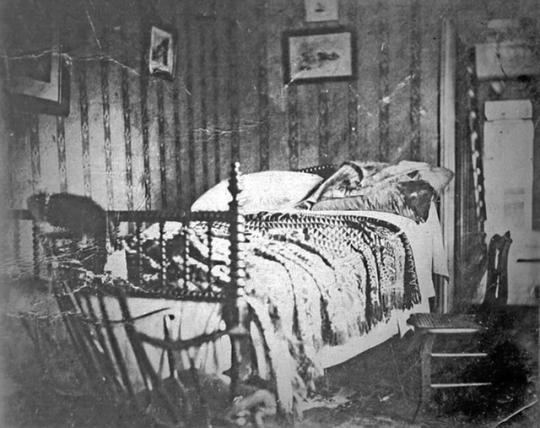#Cousin’s Wars
Text




The Mortimer inheritance running in a Tudor prince: here’s how historian Sean Cunningham brings to public debate an often overlooked aspect of Prince Arthur’s Yorkist connection to his Mortimer’s ancestors and how he, an unofficial Earl of March, was expected to incorporate this to his kingship.
“Arthur's transition into the leader of Marcher society did involve a clever reinterpretation of regional history that put the new prince at the center of an old story.
The area that became the most important to Prince Arthur was the region in the Welsh Marches linking Worcester, Bewdley, Ludlow, Weobley and Leominster. Along with Shrewsbury to the north, Wigmore to the west and Hereford to the south, this was the centre of power for the Prince of Wales, and the area that his Council in the Marches dominated as representative of the more distant Westminster government.
In setting up Arthur's seat of power here, Henry VII was consciously merging several strands of political influence.
Those people that surrounded and served Arthur in the late 1490 knew that this region had been the heart of the lordship of the earldom of March. The last living earl had been the young Edward V before his father died and he disappeared.
Once Edward was believed to be dead, Arthur's mother, Queen Elizabeth, became the last heir of the Yorkist kings and therefore the most prominent living descendant of the Mortimers as earls of March.
Arthur was being linked to that earldom and the Mortimer family as a direct expression of his mother's lineage and what it represented. The earldom had for many years been a critical part of the House of York's power.
Mortimer blood was also a factor in building a Yorkist claim to the throne. Elizabeth's grandfather Richard, 3rd Duke of York had been a product of the marriage of Anne Mortimer and Richard, Earl of Cambridge, one of Edward III's grandsons. Anne was the sister of the last Mortimer Earl of March - Edmund Mortimer, who had died in 1425.
Richard, Duke of York had inherited the Mortimer estates and the dormant Mortimer claim to the crown through dual descent from Edward III. It was Edward IV that brought this fusion of rights and entitlements together when he became king in March 1461.
For Prince Arthur to be seriously considered the fulfillment of the prophecy of King Arthur's deed to lead Britons in a new and glorious age, the kings subject were expected to know the significance of the story. They were probably helped out in their recollections by the representation of parts of King Arthur's story in the pageantry that accomparied many ceremonial events in which the royal family was involved.
When Prince Arthur visited Coventry in 1497 he was greeted by a pageant that featured King Arthur and the other eight of the Nine Worthies, in which the legendary King of Britain made a speech of welcome. This entertainment carried an important and repeated message about the legitimacy of the place of Henry VIl's family in the long line of England's rulers.
It is possible, however, that there was a more specific justification for Henry VI's use of the legends of early Britain, namely Prince Arthur's inheritance of Mortimer power and his presence in the borderlands of England and Wales.
The Mortimer family had shown considerable interest in the Arthurian stories as part of their genealogy. The legendary figures Cadwaladr, Brutus and Arthur were viewed as ancestors and not mythological predecessors. When the Mortimers married into the family line of Llewelyn ap Iorwerth in 1228 they absorbed the descent of the princes of Wales growing from Cadwaladr.
A genealogical roll of the Mortimer family provides some valuable evidence of how Arthurian tradition was heavily promoted by family members as they developed their relationship with King Edward I in the 1270 and during the English war with Prince Llewelyn ap Gruffydd before 1282.
Later Plantagenet kings allowed the Mortimers to build up vice-regal power along the border from their castles and estates at Wigmore, Ludlow, Cleobury and Chirk. Even after the treason and execution of Roger Mortimer, 1st Earl of March in 1330, the family were able to recover their influence in the Marcher lands.
(…) Even after Edward I’s conquest of Wales and Henry IV's defeat of Owar Glyadir a century later, the annexation of Wales by England was never seriously contemplated. The English Crown's authority was exercised by deputies from within the regional communities that knew the people, landscape and history of the March. They were the king's intermediaries and were agents whose relationship with the Westminster government and court was essential to the achievement of aspirations of national security and stable rule.
Henry VII's interest in ancient British stories was a prop to the extension of his royal authority generally, and that of the Marcher lords in particular. It fitted with his grand scheme to revive an older form of lordship for his son in order to create a foundation of loyalty for Arthur's future kingship. King Henry's prominent use of the red dragon standard associated with Cadwaladr - still one of the most identifiable of Tudor images -(…).
In November 1493, Arthur was formally granted the lands and rights of the earldom of March during the king's pleasure. He was not expressly given the title, which had already been in Crown hands for thirty-two years, but this was an absorption of Marcher power into the new regional force that Arthur was to embody.
Once he held the power and estates of the earldom of March, Arthur acquired the real and the mythical associations of the earldom into his personal lordship. His arrival as a new border figurehead offered Arthur the potential to build a very strong and stable structure of lordship in the communities of the Marcher region.
Since it distilled his personal power into a more potent form, immediate acceptance of Arthur's inheritance of the March was as important as a boost to Arthur's royal presence as was his national status as Prince of Wales after 1489 or earlier title of Duke of Cornwall.
As he grew into his role, Arthur would develop this network and nurture the service of families connected with the earldom of March and the Yorkist Prince of Wales without the need to labour his relationship to the legendary power of King Arthur.
At the end of 1485, the threat posed by opponents biding their time in Richard IIl's northern power base was the most immediately pressing problem for Henry VII. Unfortunately, he could not simultaneously relax his efforts to promote his kingship and make the presence of the regime felt elsewhere.
In the areas where encouragement was offered by the loyalties of those who had already declared their allegiance to the new regime, the king moved swiftly to establish his allies. Henry VII could not afford to be seen to be undermining, manipulating or threatening the old Yorkist and Mortimer networks.”
Cunningham, S. “Prince Arthur: The Tudor King Who Never Was.”
#Arthur Tudor#Prince of Wales#Arthur prince of Wales#Arthur Tudor Prince of Wales#Tudor dynasty#Tudor England#cousin’s wars#wars of the roses#house of York#house of Mortimer#house of Lancaster#Henry VII#Richard of York#Richard 3rd Duke of York#Richard of Conisbury#Anne de Mortimer#Roger de Mortimer#Roger Mortimer#Earl of March
30 notes
·
View notes
Text

“24 August 1482
From the fairytale turrets of Saumur Castle, atop which golden fleur-de-lys glistened in the summer light, to the bulbous towers of Angers, where the château loomed on a cliff edge above the River Loire, the funeral cortege of Margaret of Anjou carried the queen on her last journey.
For six years she had been exiled back to the lands in which she grew up, a half-welcome guest of her father and King Louis, with little more than hunting dogs, books and a casket of relics to remind her of past glories. She was going now to rejoin her ancestors. Her last request to King Louis was that he would allow her to be buried with her parents: in their sepulchre at Angers Cathedral.
Since her capture at Tewksbury in 1471 Margaret's life had become one of solitary retirement. She had not stayed long in the Tower of London, although she must have been there when Henry was killed.
For a time she was kept at Windsor Castle, and by January 1472 she had moved to Wallingford in Oxfordshire, where her keeper was her old friend, Alice Chaucer, dowager duchess of Suffolk.
The women had once been close, Alice perhaps even having something of a maternal place in Margaret's heart. Since Suffolk's murder their lives had taken very different courses, and their enforced time together during Margaret's imprisonment cannot have been entirely happy.
Where Margaret had resisted the Yorkist regime with all her strength, Alice had come to terms with it even before Henry VI was first deposed. In 1458 Alice had overseen the marriage of her only child, John, to York's daughter Elizabeth. At the time this must have seemed a dangerous move, but her gamble had paid off. Her son still lived, a prominent member of the court of King Edward IV, and a king's brother-in-law.
Margaret, by contrast, had lost her family to the wars. Under house arrest, she was reliant on Edward to provide her with enough money to cover the expenses of herself and her servants.
One of those servants was Lady Katherine Vaux. Katherine had lost her husband, Margaret's old servant Sir William, at Tewksbury and the pair were bound so tightly together, whether through shared grief or the loyalty of many years' service, that Katherine stayed with Margaret until the end.
The pair of them probably appear in an image in the Guild Book of the London Skinners' Fraternity in 1475. Margaret wears an ermine-lined dark gown, her head covered like a nun, kneeling forward to read a religious text from her prayer book while a discarded crown and sceptre lie beside her. Behind Margaret is a more fashionably dressed woman, evidently in attendance on the queen, with her prayer book in her hands, her eyes more on her mistress than her prayers.
Both Katherine and Margaret were members of this fraternity in honour of the Assumption of the Virgin Mary who Margaret, like Henry, always particularly revered. As this image in the Skinners' record suggests, Margaret's imprisonment under Edward IV was not especially stringent.
Other members of the Skinners' Guild Fraternity included Queen Elizabeth Woodville and her ladies, so the fraternity would not have risked their ire by welcoming Margaret without their consent.
Margaret was provided with clothing, mostly black, at royal expense and had enough freedom not only to join this guild but also to enjoy the services of the dean of Edward's chapel in 1474. Having moved from Wallingford to London for most of the intervening years, in 1475 an international treaty between Edward and Louis XI was finalized that ransomed Margaret to Louis for £50,000.
In return for being able to return to her father's territories with a small pension from Louis, Margaret was forced to renounce all of her claims not only in England but also in France. The woman who had clung so tenaciously to her family's right to the English crown was now willing to give up virtually everything she owned to go home. After all, there was no one to inherit her titles or lands after her death. Thus, in November 1475, she was transferred into the keeping of Sir Thomas Montgomery to be escorted to France.
For several years Margaret lived in her father's castle at Reculée, near Angers, but when René died in 1480 she had to rely on one of his servants to provide her literary interests. Some years earlier she had commissioned the Burgundian memoirist Georges Chastellain to write Le Temple de Bocace, a consolation piece dwelling on the changing fortunes of the world and the unjust criticism that had been levelled at her.
Presumably she also occasionally rode or hunted through the verdant rolling fields and woodland surrounding her, enjoying at least one pastime from her old life. Margaret may have ridden from her modest home at Dampierre to the more imposing Château Montsoreau on the banks of the River Loire, over time she developed enough of a relationship with he castle's owner, Madame de Montsoreau, to gift her all of her hunting dogs shortly before her death - a high-status offering for a lady who had perhaps been a friend in the queen's last years.
In the summer heat of 1482 Margaret fell ill and, with the faithful Katherine Vaux at her side, she made her last will and testament on 2 August. Louis XI, who had once mocked her proud writing style, would have found little to displease him in the humble petitions that filled this short document.
'Sound of mind, reason and thought, however weak and feeble of body', Margaret asked to be buried in the cathedral church of St Maurice in Angers beside her parents, 'in whatever manner it pleases the king to ordain, or in another place if he prefers'.
She wrote that she did not have enough money to cover the cost of the funeral and suggested that Louis sold her remaining possessions to pay for her burial - as indeed he did.
And perhaps thinking of Lady Katherine, she 'recommend(ed] very humbly and affectionately' her 'poor servants... to the good grace and charity of the said King'. She had evidently lived on the charity of others for some time, and implored Louis, as her sole heir, to cover any remaining debts she had incurred.
Louis did as Margaret asked and had her honourably buried with her parents, but he insisted on reclaiming the hunting dogs that she had gifted to Madame de Montsoreau. 'You know (Margaret] has made me her heir, the king reminded Montsoreau in a letter written days before the queen actually died, 'and that this is all I shall get; also it is what I love best. I pray you not to keep any back, [or] you would cause me a terribly great displeasure’.
Even in death, Henry and Margaret were the pawns of others.”
JOHNSON, Lauren. “Life and Death of Henry VI”.
Fan cast: Sophie Turner as young Marguerite and Lena Headey as Queen Marguerite.
#margaret of anjou#Marguerite d’Anjou#reine marguerite d'angleterre#queen Marguerite#queen margaret of Anjou#queen margaret#house of lancaster#Plantagenet dynasty#wars of the roses#cousin’s wars#Katherine vaux#Alice chaucer#Edward iv#Elizabeth of York#duchess of Suffolk#Henry VI#king Henry VI#Louis XI of France#Louis XI
19 notes
·
View notes
Note
What do Luke, Leia, and more importantly PADMÉ (and the whole gang really) react to Anakin having siblings - and those siblings being literal Dathomiri Force Gods that Anakin also was instrumental in killing
can u imagine if they DIDN'T die tho

(donation doodles! // tip jar)
#i need to draw the mortis gods abt 3000x more i love their designs sm#anakin skywalker#the daughter#the son#leia organa#luke skywalker#padme amidala#mortis#mortis gods#padmé amidala#skywalker family#mortis cousins au#star wars#my doods#thanks for the ask!#mortis arc
4K notes
·
View notes
Text

Speechless
#COUSIN WAR CRIMINAL GOT SNATCHED BY THE SPIRIT WITH MOMMY ISSUES#that’s as funny as it is sad#lu ten#atla#avatar the last airbender
3K notes
·
View notes
Note
beggin you on my knees for rex(+fox mb) as request😔🙏🏻

beloathed cousins. to me
#the type of cousins that get in a fight every time they see each other. affectionately#commander fox#captain rex#the clone wars#star wars#tcw#deckdraws
1K notes
·
View notes
Text

a lecture (but someone is definitely not listening)
#obikin#anakin skywalker#star wars#obi-wan kenobi#obi wan kenobi#trying to introduce sw to my younger cousin and now i am back to obikin hell#my art
751 notes
·
View notes
Text




Ān Shí [ 安石 ] - Rumble (Calm stone)
Dì Zhèn [ 地震 ] - Savage (Earthquake)
I am not good with names but yippee here are the twins!! They are... Sun Wukong's... creations.. but not really so they're Xiaotian's Cousins or Brothers. No one is truly sure. Still fun tho!
More on them here!!
And no Macaque is not their father or mother or anything, they absolutely despise him
Also also: yes QXT's makings are new but they are to show off very weird and subtle snake motifs.
#art stuff#lego monkie kid#blood moon monkies#lmk rumble#lmk savage#Ān Shí [ 安石 ]#Dì Zhèn [ 地震 ]#uhmmm what else#soooo#su daji and erlang wear BLOOD red because that's su daji's colors and erlang's hands are tainted with blood from wars and heaven#QXT wears red along with Nezha and Red Son to be somewhat in between them#since hes their cousin and the middle-child somewhat bc of his status and being related to swk#he wears gold on the inside to indicate he's related to SWK#his main outfits is oranges and golds#and then SWK wears red because of volcanoes and ash and yadadada#aaaand thats it#yippeee
533 notes
·
View notes
Text



"beeeeeeeen aunt leia said you have to shareeeee >:/"
"um cant you get your own boyfriend :/"
"I AM NEITHER OF YOURS BOYFRIEND GET THE FUCK OFF MY SPACESHIP"
#star wars fanart#star wars#kylo ren#ben solo#armitage hux#general hux#brendol hux#rey skywalker#rey solo#reylo#reylux#or something lol#kylux#theyre cousins to me :P#art
304 notes
·
View notes
Text


Doodle of Achilles and Ajax playing dice based on this black figure vase painting by Exekias
#Quality cousin time#Is ajax huge or is Achilles just tiny: the game#The only straight haired Homeric heroes I’ve drawn#Achilles is anticipating dodging the board when Ajax inevitably flips it#Ajax the greater#Achilles#greek myth#my art#greek myth art#achilles art#This vase has such foreboding energy yknow with the full black border and the fact that neither of them live to see the end of the war#And a moment of downtime in the Trojan war between two family members yknow#My doodle does NOT have the same energy lmao#The iliad#trojan war
2K notes
·
View notes
Text











human au. some of these guys spend too much time on here and it shows
#don't ask how long this took#doctor who#the doctor#the master#i'm not tagging them all. god#nu who doctors & masters & also 8 is there bc he's just a lil guy (and tbf no one can agree which era he belongs to anyway)#fun fact i started making these so long ago that i had to redo the ones i'd done bc tumblr had changed its layout in the intervening time#i don't know 15 well enough yet to make him one but also he's exclusively an insta girlie lbr#or war and fugitive. but i think war doesn't have social media and fugitive's starting stan wars on twitter#jacobi!master is exclusively linkedin#also 10's a horsegirl argue with the wall. he saw barbie twelve times and came away with the wrong message#is there a bg for this au? not really. in my main human au everyone is pretty wild whereas here they're more normal#they're just hangin out here ig. 9-11+14 are siblings. 12+13 are siblings. the two groups + 8 are cousins#saxon & missy are cousins and missy & spymaster are foster siblings#if anyone likes this i'll make one for the companions too. actually i probably still will bc honestly this was really fun & relaxing to mak#but if you see an error in one of these no you didn't. don't point it out to me i'll scream
259 notes
·
View notes
Text

After President Abraham Lincoln was shot during a performance of Our American Cousin at Ford's Theatre, several doctors who were in the audience and also enjoying the play rushed into the Presidential Box and began attending to the President. It was clear that Lincoln's wounds were almost certainly mortal, but the doctors still attempted to save his life. Originally thinking that the President had been stabbed, they soon found that he had been shot behind the left ear and the bullet -- a 43.75 mm ball which had been fired by John Wilkes Booth's .44 caliber Derringer -- had sliced through Lincoln's brain and lodged behind his eye sockets without exiting the skull. When Lincoln's breathing became more shallow, Dr. Charles Leale used his finger to remove blood clots from the wound, which immediately improved Lincoln's respiration.
The doctors decided to move Lincoln from the theater, but felt that the President's condition was far too weak to risk taking him back to the White House, which was several blocks away. A nearby saloon was considered just as unseemly of a place for the President to spend his last hours and likely die in as a theatre, so Lincoln was carried across the 10th Street to William Petersen's boarding house. When they brought Lincoln into the boarding house, they realized that the 6'4" President was too tall for the bed they found for him, so they laid him diagonally upon it.
It was obvious that Lincoln could not survive his wound, so the attending doctors simply tried to keep him comfortable in his final hours by clearing the blood clots in his skull that caused his breathing to become more labored. Throughout the night, the President never regained consciousness, but witnesses said that he looked peaceful as his life was drawing to a close. The only visible evidence of his mortal wound were the bloody pillows that his head rested on and the raccoon-like bruising around Lincoln's eye sockets due to the orbital bones fractured by Booth's bullet after it passed through his brain. Nine hours after he was shot, Lincoln died in Petersen's Boarding House at the age of 56.
Shortly after the President was pronounced dead, his body was placed in a coffin and transferred back to the White House in a carriage. Just a few hours later, one of the residents of Petersen's Boarding House, Julius Ulke, took a photograph (seen at the beginning of this post) of the room and the bed -- including a pillow soaked with the President's blood -- where Lincoln had died earlier that morning.

The room in Petersen's Boarding House where Abraham Lincoln died, pictured in 2007.
#History#Abraham Lincoln#President Lincoln#Death of Abraham Lincoln#Assassination of Abraham Lincoln#Lincoln Assassination#Presidents#Presidential History#Presidential Assassinations#John Wilkes Booth#Assassins#Assassinations#Political History#Civil War#Civil War History#Petersen's Boarding House#Ford's Theatre#Presidential Deaths#Our American Cousin
167 notes
·
View notes
Text

A letter written by Queen Elizabeth to John de Vere, Earl of Oxford. (Circa 1492).
“To our right trusty and beloved cousin, the Earl of Oxenford
By the Queen.
Right trusty and entirely beloved cousin, we greet you well, letting you wit [understand] know how it is come unto our knowledge that, whereas ye newly entered upon our well beloved Simon Bryant, gentleman, into the manor of Hemnals (Hempnalls Hall, Sufolk) in Cotton, descended and belonging unto him by right of inheritance, as it is said, ye thereupon desired the same Simon to be agreeable for his part to put all matters of variance then depending atween him and one Sir John Paston, knight, pretending a title unto the said manor, into th’award and judgement of two learned men, by you named and chosen as arbiters atween them; and in case that the same arbiters of and upon the premises neither gave out nor made such award before the breaking up of Pasche [Easter] term, now last passed, ye of your own offer granted and promised unto the said Simon, as we be informed, to restore him forthwith thereupon unto his possession of the said manor; and how it be that the same Simon, at your motion, and for the pleasure of your lordship, as he saith, agreed unto the said compromise, and thereupon brought and showed his evidence concerning, and sufficiently proving, his right in the said manor unto the said arbiters; and that they have not made nor holden out between the said parties any such award.
Yet have not ye restored the same Simon unto his possession of the said manor but continually kept him out of the same, which, if it so be, is not only to his right great hurt and hindrance, but also our marvel.
Wherefore we desire and pray you right affectuously that ye will rather, at the contemplation of these our letters, show unto the said Simon, in his rightful interest and title in the said manor, all the favourable lordship that ye goodly may, doing him to be restored and put into his lawful and peaceable possession of the same, as far as reason, equity and good conscience shall require, and your said promise, in such wise that he may understand himself herein to fare the better for our sake, as our very trust is in you.
Given under our signet at my lord's Palace of Westminster, the xxv day of June,
Elesebeth.”
WEIR, A. In Blest Wedlock. In: Elizabeth of York: A Tudor Queen and Her World. pp 199-200. United States. 2014.
#Tudor dynasty#house of Tudor#The Tudors#House of York#Plantagenet Dynasty#Plantagenet#Plantagenets#House of Plantagenet#Cousin’s Wars#Wars of the Roses#Elizabeth of York#Queen Elizabeth of York#Queen Elizabeth of England#Queen Elizabeth#Henry Tudor#Henry VII#Tudor England#Tudor history
48 notes
·
View notes
Text
Did Penelope talk to Odysseus about it? When Odysseus was told that Helen had been abducted by a Trojan prince and all the kings of Greece were being summoned to go to war against Troy and bring her back, Odysseus didn’t think that was any of his concern and didn’t want to go, but what did Penelope think? Helen is her cousin. Penelope was raised alongside her like a sister. Did Penelope think of her beloved cousin kidnapped and taken to foreign lands? Was she afraid for her? Did she encourage her husband to go, to give the war his all, to rescue Helen and bring her home, because Helen is her family? Not for Menelaus’s sake, or even for Helen’s, but for hers. For Penelope. For Odysseus’s love for her, for him to go and join the rescue attempt for her cousin.
#Depends of if Penelope thinks Helen was kidnapped or if Helen was unhappy with Menelaus and ran off with a hot younger man#But. I think if Penelope approached Odysseus like this. He might be a little more willing to go to war#What DID Penelope think about this. Sending her husband off to war. But in service of rescuing her kidnapped cousin#The torn feelings. The anguish in each direction#The hope that it would be over soon and they both would be back soon#tagamemnon#Greek mythology#this is only tangentially#The Iliad#Will real classics fans get mad at me tagging it that#perpetual perpetual ladies night
305 notes
·
View notes
Text

桃華 | peach blossom
Day 5: Girlboss for @foundersweek
#foundersweek2023#naruto#senju toka#naruto art#my art#i love me some polearms—guandao naginata halberds war scythes anything long n pointy#I originally intended her for day 4 forgiveness#with her and orichimaru#since I’ve long headcanoned he’s toka’s grandson and a (distant) cousin to tsunade
266 notes
·
View notes
Text
unpopular opinion I think Azula wanted Lu Ten dead as a kid on some level I think she wanted to put him in a Saw Trap. like "I'd be a way better Firelord than this guy and also he keeps giving me Welches Fruit Gummies when he comes over when I TOLD him I HATE gummy based snacks. I'm going to put scorpions in his shoes" etc etc
#her divine right as a weird little girl and also because probably Ozai drops constant hints about how#Iroh and Lu Ten aren't as fit for the throne as HIS line of succession would be (Zuko notwithstanding)#atla#like. increasingly fatal prank war against her cousin. Im right.
245 notes
·
View notes
Text

no genocide au rinaltan <3
#the poppy war#fang runin#altan trengsin#rinezha#chaltan#my art#rinaltan cousins make me so sad because what if#what if the speerly genocide never happened#what if#rin could’ve grown up on speer#happy.
131 notes
·
View notes